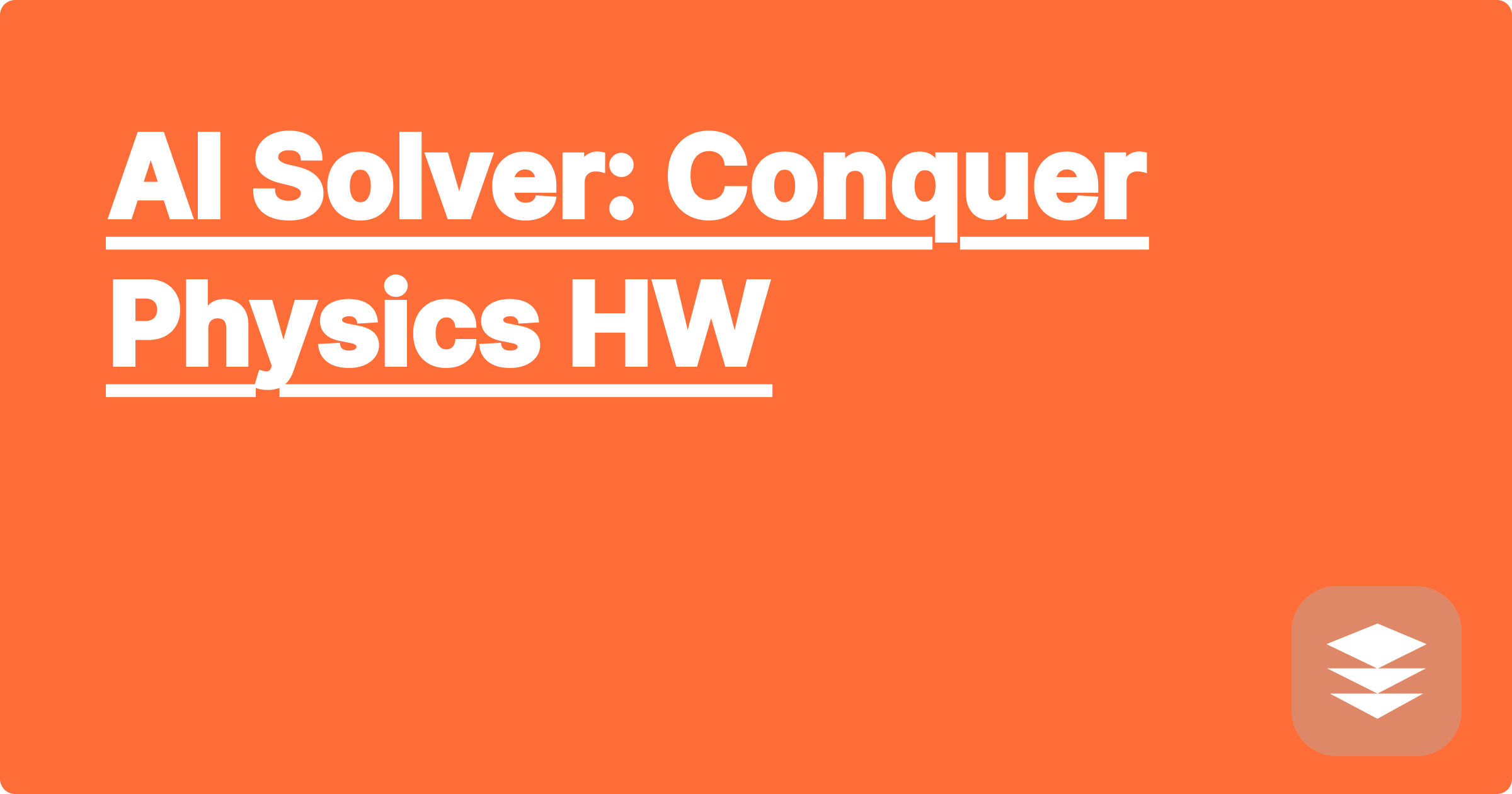
The world of STEM education, particularly physics, often presents students and researchers with complex problems that demand significant time and effort to solve. These challenges can range from deciphering intricate equations to understanding abstract concepts, often leading to frustration and a sense of being overwhelmed. Fortunately, the rise of artificial intelligence offers a powerful new set of tools to assist in conquering these academic hurdles. AI can provide not only solutions but also valuable insights into the underlying principles, fostering a deeper understanding of the subject matter.
For STEM students and researchers, effectively leveraging AI can be a game-changer. It can free up valuable time to focus on higher-level thinking, exploring new ideas, and delving deeper into research. Mastering these tools can significantly enhance productivity and accelerate the learning process, providing a competitive edge in a rapidly evolving technological landscape. Moreover, understanding how to utilize AI responsibly and ethically is becoming an increasingly important skill in today's world.
Physics, as a fundamental science, explores the nature and properties of matter and energy. It involves complex mathematical models, abstract concepts, and often requires a significant investment of time and effort to grasp the underlying principles. Students frequently encounter difficulties in solving problems related to mechanics, electromagnetism, thermodynamics, and quantum mechanics. These challenges can stem from a lack of conceptual clarity, difficulty in applying mathematical formulas, or simply the sheer volume of work required to solve complex problems. Researchers, too, face similar challenges when dealing with advanced theoretical concepts or analyzing large datasets. The ability to quickly and accurately solve physics problems is essential for both students and researchers to progress in their respective fields.
AI-powered tools like ChatGPT, Claude, and Wolfram Alpha offer a revolutionary approach to tackling physics problems. These tools can provide step-by-step solutions, explain complex concepts in simpler terms, and even generate code for simulations. ChatGPT and Claude, for example, can be used to break down complex problems into smaller, manageable parts, offering explanations and guidance along the way. Wolfram Alpha, with its powerful computational engine, can handle intricate calculations, symbolic manipulations, and provide visualizations, making it an invaluable tool for tackling complex physics problems. By combining the strengths of these different AI tools, students and researchers can create a powerful and efficient workflow for solving even the most challenging physics problems.
To effectively utilize these AI tools, start by clearly defining the problem you want to solve. This involves stating the given information, identifying the unknowns, and specifying the relevant physical principles involved. Next, choose the appropriate AI tool for the task. For conceptual understanding and step-by-step solutions, ChatGPT or Claude might be suitable. For complex calculations and symbolic manipulations, Wolfram Alpha is often the better choice. Then, input the problem statement into the chosen AI tool, ensuring clear and concise language. If necessary, provide additional context or constraints to guide the AI towards the desired solution. Carefully examine the output generated by the AI, ensuring it aligns with your understanding of the problem and the underlying physics. Finally, verify the results using alternative methods or by cross-checking with textbooks or other reliable sources.
Consider a classic physics problem involving projectile motion. You are given the initial velocity and launch angle of a projectile and asked to find its maximum height and range. Using Wolfram Alpha, you can simply input the formula for projectile motion, along with the given values. Wolfram Alpha will then calculate the maximum height and range, providing both numerical results and graphical representations of the trajectory. Another example could involve solving a complex circuit problem. Using ChatGPT or Claude, you can describe the circuit configuration and ask for the current flowing through each branch. The AI can then guide you through the steps of applying Kirchhoff's laws to solve the problem, providing explanations for each step. Furthermore, these tools can be used to explore more complex scenarios, such as modeling the behavior of a pendulum or analyzing the thermodynamics of a heat engine.
To maximize the benefits of AI in STEM education and research, it's crucial to develop a strategic approach. Don't simply rely on AI to provide answers; instead, use it as a tool to enhance your understanding. Focus on understanding the underlying principles and the steps involved in solving the problem, rather than just memorizing the solution. Use AI to explore different approaches to the same problem and compare the results. This will help you develop a deeper intuition for the subject matter. Additionally, be mindful of the limitations of AI tools. Always verify the results and ensure they align with your understanding of the physics involved. Finally, use AI ethically and responsibly, acknowledging its role as a tool to support your learning, not replace it.
In conclusion, AI offers a powerful set of tools for conquering the challenges of physics homework and research. By understanding how to effectively utilize these tools, STEM students and researchers can significantly enhance their learning and productivity. Embrace these technological advancements, but always remember the importance of developing a strong foundational understanding of the underlying principles. Start exploring these tools today and unlock the potential of AI to transform your STEM journey.
AI Homework Help: STEM Made Easy
Ace STEM Exams: AI Study Guide
AI for Lab Reports: Data Analysis